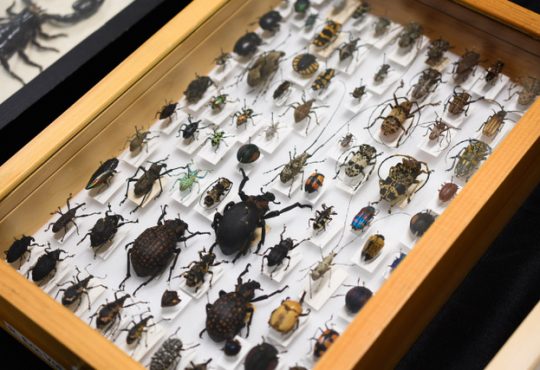Thompson Hall recently hosted the Slater Museum’s open house, called, “It’s Wild Outside: Discover Backyard Biology and the Nature Next-door!” The open house encouraged Puget Sound students and Tacoma families to attend and learn more about animals native to the Pacific Northwest, as well as those from other places in the world.
The open house featured both living animals and their taxidermies, getting both children and Puget Sound students interested.
The animals included a Virginia opossum and a Peregrine falcon, neither of which could be touched but both of which were very fascinated by the humans observing them. While the Peregrine falcon is native to places like Tacoma, the Virginia opossum wasn’t brought to Washington until the 1900s as a pet, and yet it has made itself at home in our state.
The handlers answered any questions regarding the creatures, and while they didn’t advise people to pet the animals, the opossum’s handler did comment that once the opossum was taken to other schools and had the chance to interact with more humans, she would most likely allow petting.
Animals that could be petted included a large purple starfish and a small crab, sitting in two tanks, and the people patrolling these stations encouraged this hands-on interaction with wildlife, which could probably be found in the shallow pools of the Puget Sound.
While the living creatures were fascinating, the dead ones held an interest as well. Many of the taxidermied animals presented were birds, although there were also several backyard mammals (such as raccoons and squirrels) as well as the skins of larger cats, such as a leopard and a lion head.
One station, called “Animals Unseen,” challenged children and students alike to recognize various sounds made by animals that we don’t ordinarily see. The animals making the recorded sounds included a red fox, a coyote, a red-tailed hawk, a bald eagle and other creatures. All of these animals’ pelts were on display, allowing people to point out each animal as they heard its sound.
At another table, people could learn about the strange connections between native pigeons and the parrots of tropical regions like South America.
Lying flat on their backs, the taxidermy pigeons and parrots had uncanny resemblances, such as their coloration and shape. This station was meant to illustrate the odd connections some species had, despite being distanced from one another for such a long period of time.
Along with the taxidermy, some stations showed off the aspects of the animals’ habitats. One table featured various types of scat, including that of elk and bison. One box held a squirrel cache, where a squirrel would store various important materials. Footprints made out of a jelly-like substance also adorned the table, allowing people to view what different animal footprints looked like.
There were many other displays in this small area where the open house was held, such as some pictures of native birds and a collection of photos of waterborne animals.
The open house also offered fresh native food like raspberries and blackberries, set up an arts and crafts table and featured guest speakers from nearby wildlife-related organizations such as the Point Defiance Zoo and Aquarium, the National Wildlife Federation and the Tacoma Nature Center.
According to Mary Krauszer, one of the organizers of the open house, the event was meant to connect “people to wildlife and wild places” as well as to “get visitors excited about nature and discovery; to provide opportunities to get outside, learn and explore; and make a difference for animals and habitats here and abroad.”
The museum also travels to elementary schools to teach a younger audience much of what they taught at the open house.
“This inquiry-based program,” Krauszer said, “called ‘Nature in the Classroom,’ has already reached over 600 students so far this school year, and our fan-base is growing.”
The open house was definitely directed toward these 600 elementary school students and others around the same age, but it was also fascinating and encouraging for the students of the University of Puget Sound.
It’s meant to remind us city dwellers and university students that there is indeed a world to explore out there. While we hole up in our dorm rooms and study our hearts out to prepare for finals, there’s nature to explore literally in our own backyard. We can’t forget that we are the University of Puget Sound for a reason, and programs that include people outside the University like the Slater Museum help us to remember that fact.
For more information on the Slater Museum, visit http://www.pugetsound.edu/academics/academic-resources/slater-museum/.

